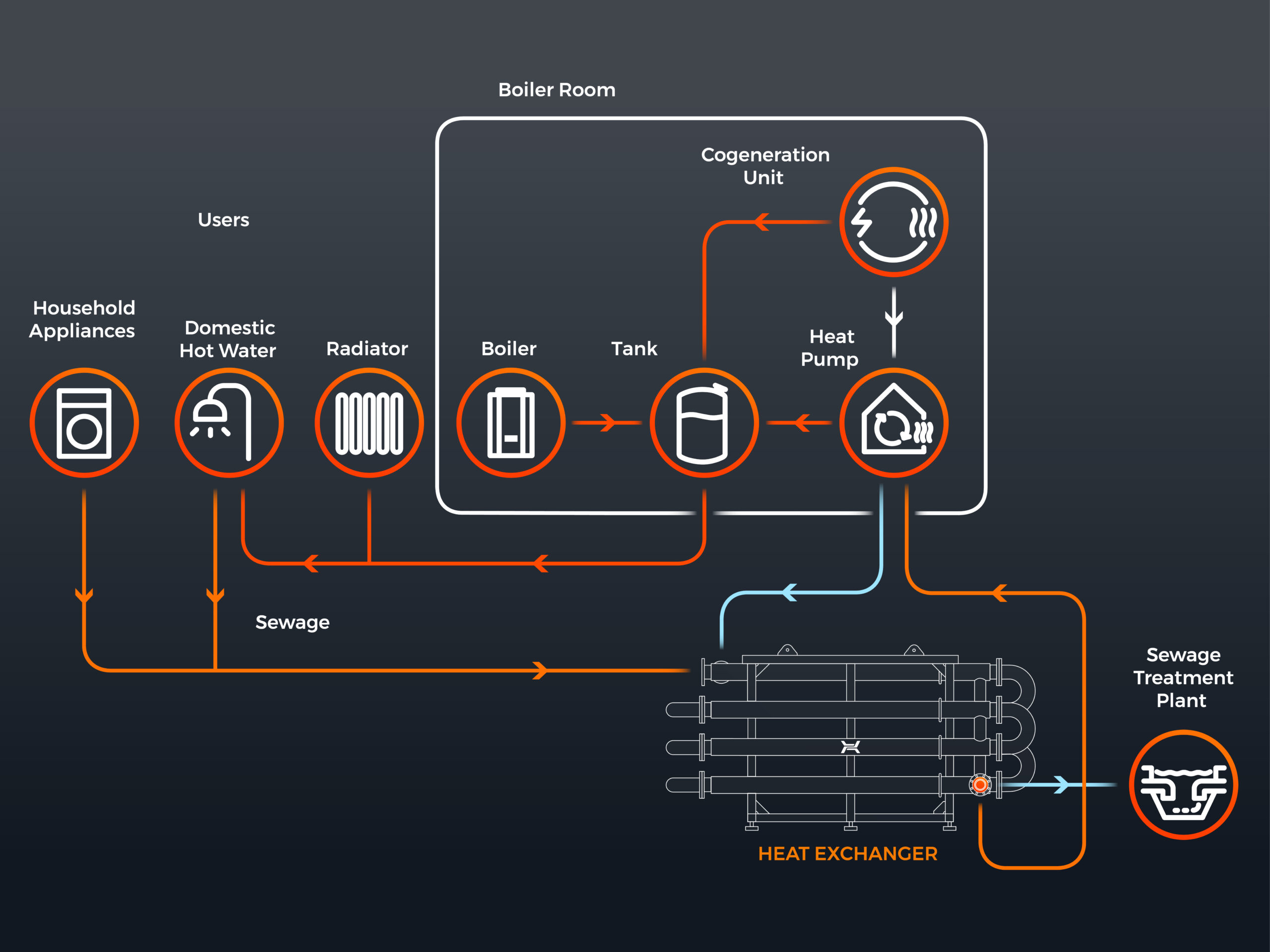Waste heat recovery
Experts say that by the middle of the century the main source of power for heating buildings will mostly be energy from renewable sources.

Experts say that by the middle of the century the main source of power for heating buildings will mostly be energy from renewable sources.

Its recovery is difficult due to the nature of the medium, which is a suspension of solid particles. It demonstrates high corrosive potential and tends to deposit on waste exchanger walls, thus causing deterioration of heat exchange conditions, and thus a decline in heat exchanger efficiency. The best product for this type of applications are Hexonic tube-in-tube heat exchangers.
They have a fully dismountable design, allowing for mechanically removing the deposit layer from the surface. Exchanger stainless steel ensures corrosion resistance and its simple design ensures failure-free operation. A single exchanger section consists of a smaller diameter tube (wastewater side) installed inside a larger diameter tube (water side). The whole exchanger is made of an appropriate number of sections connected in series and installed on a frame. The number of sections depends on the type and working parameters of the media.
